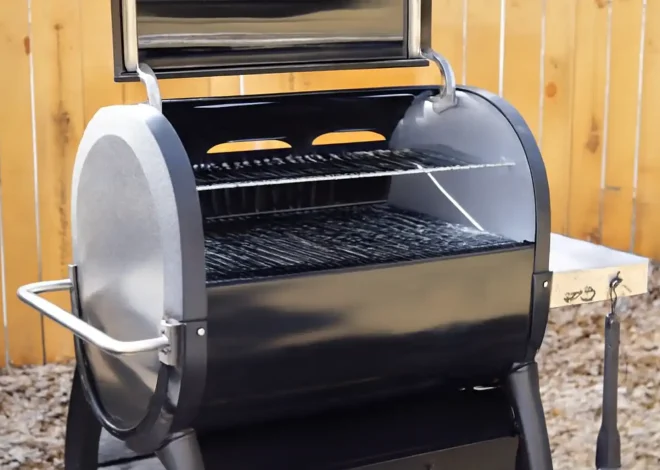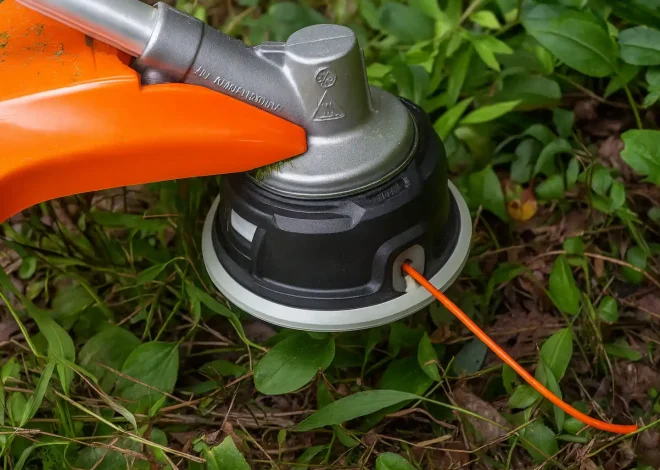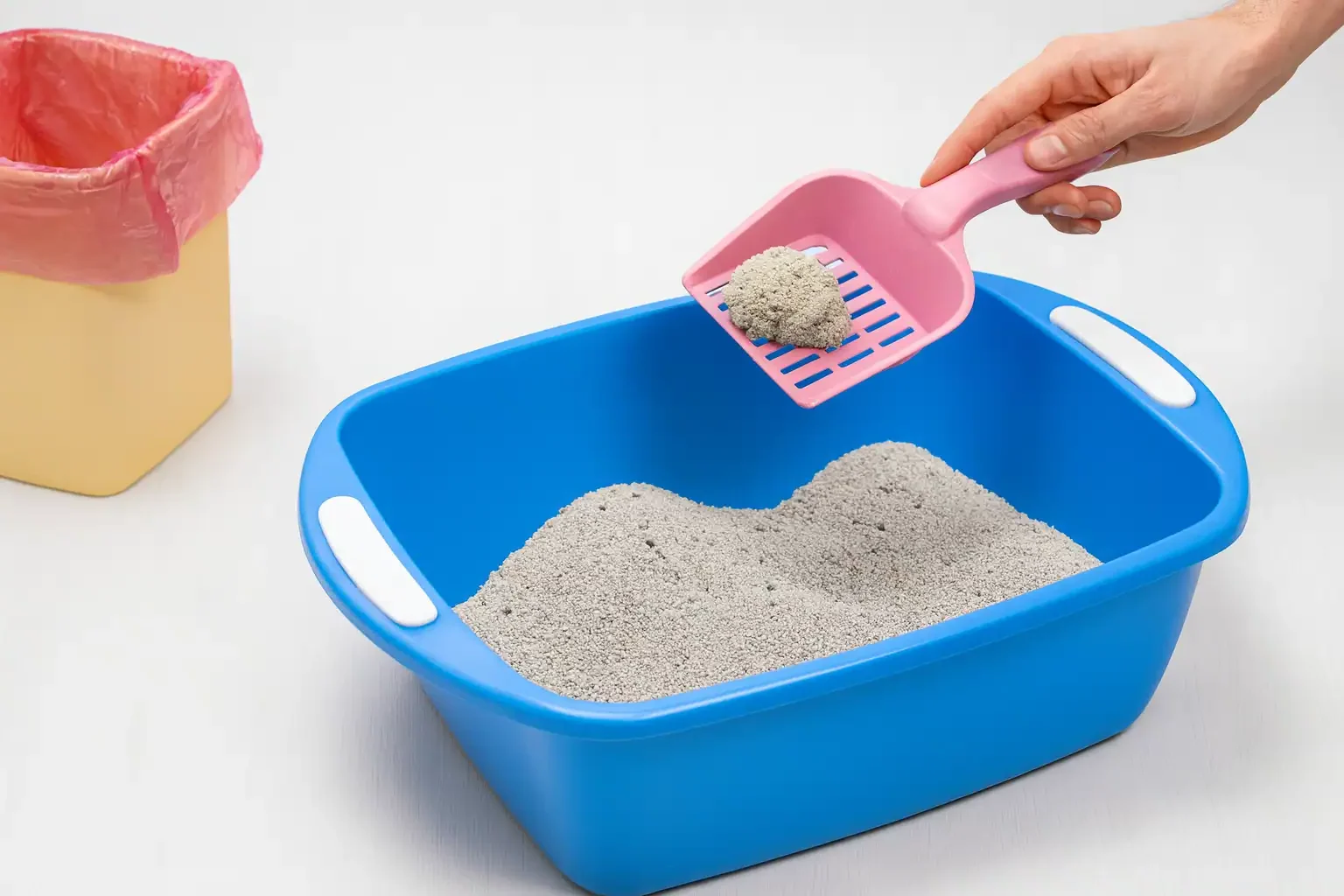
Cat Litter Melts Ice and Provides Traction on Icy Surfaces
Understanding Cat Litter Melt Ice Use on Icy Surfaces
Cat litter is a helpful solution for icy surfaces and often underestimated, especially since it won’t melt ice but adds traction. Using cat litter melt ice methods improves walking or driving safety in slippery conditions. While it does not work as quickly as commercial ice melts, it prevents slips during winter storms. In cold temperatures, it provides a quick fix for small icy areas and makes surfaces safer.
The main aspect to take into consideration concerning the question of how cat litter melt ice is its composition, particularly when looking for safer alternatives that work best above 20 degrees. While the ice-melting ability of cat litter is not as strong as standard salt, it can still be effective in light to moderate conditions. Cat litter does not directly dissolve snow and ice like rock salt; instead, it increases traction and slows down further ice formation, making walkways safer. So, although it won’t melt ice as rapidly as sodium chloride, using cat litter provides a pet-safe option that helps prevent slips and reduces the risk of refreezing.
What is Kitty Litter?
Kitty litter is a substance that is used to absorb moisture and manage odor in a cat litter box, but it can also serve as a temporary solution for traction on icy sidewalks. It is generally crafted out of clay or safe pet materials like kitty litter, which is made to be non-toxic.
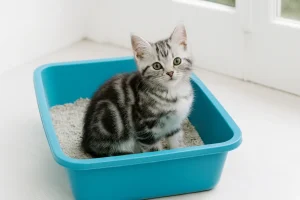
There are numerous variations of kitty litter, most of which are highly absorbent, helping to keep the litter box clean and dry while also adding traction on ice. Clay type is the most popular because of its tendency to clump in order to remove garbage easily. As well, there are some brands that propose environmentally-friendly variants, which help cat litter melt ice for customers who would like pet-safe options that are guaranteed environmentally safe. Using cat litter melt ice methods can be a safer alternative for homes that want to protect both pets and the environment.
Kitty litter can also be utilised as an unexpected solution when it comes to melting ice. It is effective in that it offers traction and provides some grip on icy surfaces. The use of such an uncomplicated approach can help prevent slippage, particularly in places where conventional ice melt is hazardous to animals. Many homeowners now consider cat litter melt ice as a safe option since it avoids harsh chemicals like sodium chloride or calcium chloride. By using cat litter melt ice, you ensure better traction on snow or ice while keeping pets and the environment safe.
How Does Kitty Litter Provide Traction?
Kitty litter is unusually designed in order to increase traction on ice, making it a safer choice for walk-on-ice situations. As a spread agent, it becomes coarse, enabling vehicles and people to move without slipping on ice or snow, providing instant traction. This increase in traction helps prevent accidents and improves snow safety conditions. Many people also use cat litter melt ice solutions on walkways and driveways to handle icy spots effectively. While not a chemical de-icer, cat litter melt ice methods work by creating grip, making winter conditions safer for everyone. For more expert guides and practical tips, check out Best Vouch.
Kitty litter works as a safe ice treatment by reducing surface tension and adding traction on icy areas like driveways. While it may not melt ice as quickly as chemicals, using cat litter melt ice methods gives instant grip and safety for pets. This makes cat litter melt ice solutions a reliable option for pet-friendly traction in freezing conditions.
Comparing Kitty Litter and Rock Salt
Between kitty litter and rock salt, there is a difference when it comes to melting ice. Kitty litter often serves as a pet-safe ice melt alternative that helps improve traction, especially when considering kitty litter vs traditional options. Rock salt aggregates are commercialized as ice melting chemicals because they reduce water freezing points, melting ice quickly. Nonetheless, it may be harmful to the environment and surfaces due to the chemicals present.
Cat litter, on the other hand, is mainly associated with providing traction on icy surfaces. While it does not work as fast as rock salt to melt ice, many people search for solutions like cat litter melt ice because it is safer for plants, pets, and driveways. For homeowners seeking a less damaging option, choosing products marketed as cat litter melt ice can be a practical and eco-friendlier alternative.
Cat litter vs rock salt is a balancing act when comparing effectiveness for ice traction. Rock salt is commonly used in snow or icy conditions, but many people also look at options like cat litter melt ice when safety and surface protection matter. While rock salt can cause corrosion and damage over time, cat litter offers grip without harmful salty effects, making it safer for the environment. In the long run, considering how cat litter melt ice solutions reduce damage to surfaces while remaining eco-friendly, it becomes a practical alternative to harsh table salt or road salt.
Evaluating the Effectiveness of Cat Litter to Melt Ice
In certain circumstances, kitty litter can serve as an ice melt in a practical and eco-friendly manner, especially when considering kitty litter on icy surfaces to provide some traction. Its effectiveness arises from its capacity to furnish grip on slick areas; however, its ability to melt ice without other agents is slower than that of other commercial blends, making it less effective than some safe ice melt options.
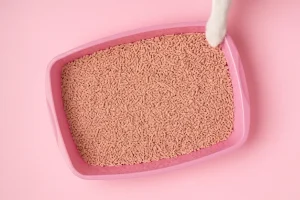
Although the granules absorb moisture to loosen the ice, cat litter excels at supplying grip on slippery surfaces. While it won’t directly melt ice, many people search for cat litter melt ice solutions to improve safety in winter. In reality, cat litter melt ice is not about dissolving snow but about adding reliable traction to prevent slips.
Cat litter takes longer to dissolve ice than conventional salt-based blends, and you may have to wait for quite a while before any improvement is noticeable. Its effectiveness is greatest in areas with minimal snow or ice accumulation, where kitty litter helps enhance safety. Many people wonder, does cat litter melt ice? In reality, cat litter does not melt ice at all it mainly provides traction.
How quickly kitty litter affects ice ultimately depends on the surrounding temperature and the thickness of the accumulated layer, which influences its usefulness. Typically, the process takes several hours, making it less effective for clearing large icy surfaces such as driveways or rinks. For smaller patches, though, using cat litter melt ice methods can still provide extra grip and reduce the risk of slips.
Can Kitty Litter Actually Melt Ice?
Cat litter takes longer to dissolve ice than conventional salt-based blends, and you may have to wait. Numerous people inquire about whether cat litter melt ice during the winter. Yes, it can, though it goes about the task in a completely different way than ice-melting agents such as calcium chloride or road salts. Even though it lacks the chemical formulation to dissolve the ice, kitty litter can still help gain traction on slippery surfaces, making it a viable option for adding traction. Although it is hardly the ideal option, cat litter melt ice slowly and can still provide beneficial help in light wintery conditions.
Though cat litter for ice melt cannot liquefy the snow or ice, it still functions as a short-term remedy by boosting traction, like traction magic. Using cat litter melt ice methods falls short of conventional ice-melt chemicals, yet it suffices as a temporary solution when stronger options aren’t available, particularly for traction magic on icy sidewalks. As a result, although it can lend a hand in an emergency, when faced with more serious ice problems, you should turn to stronger solutions—such as calcium chloride or road salts that have been proven to cat litter melt ice alternatives for over 20 years.
Ice Melt Products vs. Kitty Litter
A range of people rely on kitty litter in place of conventional ice-melt products whenever they need to remove snow and ice from their driveways. Though ice-melt products are designed to rapidly break down snow and ice, kitty litter refrains from that function altogether. Even though it won’t dissolve the ice, it nonetheless offers plenty of traction magic on slippery walkways and roadways, thereby making them easier to traverse. Many homeowners also search for solutions like cat litter melt ice when looking for safer alternatives, even though the product doesn’t actually melt. Instead, cat litter melt ice works as a traction aid, preventing slips and falls during winter conditions
Their chief difference lies in how fast and how well each product performs. Commercial ice melt products remove snow and ice at a quicker pace than kitty litter, which is frequently applied on roadways to supply vital traction when slippery conditions arise. While some brands of cat litter melt ice with added melting agents, they perform nowhere near as well as commercial ice-melt products, particularly those that are pet safe and provide instant traction. As a pet-friendly alternative, cat litter melt ice is often recommended because it puts animals at lower risk than conventional salt-based ice melts, making it a safer and environmentally friendly choice.
Pet Safe Options for Ice Melt
When selecting pet-safe ice melt products, make sure they are gentle on your pets and the environment as well, particularly those that won’t melt and are good for ice. Safe Paw is a widely used pet-safe remedy that is toxic-free and safe for animals to traverse. Another viable option is to look at cat litter melt ice, which offers grip while helping to break down ice in a pet-friendly manner, as it doesn’t actually melt ice but improves traction.
Furthermore, employing sand for grip offers no chemical exposure, delivering a natural alternative to harsher ice melts like sodium chloride or calcium chloride, making it safer for the environment. If you want a simple, non-toxic solution, cat litter melt ice is one of the best natural choices for households with pets.
Pet owners should make the safety of their furry companions their foremost concern. Employing a pet-safe ice de-icer or alternative ice-melting treatment averts paw irritation and ensures their safety during winter walks. Be sure to read the label first to make sure the ice melt you choose is expressly labeled pet-safe, thereby protecting your furry friend while ensuring effective ice melt for over 20 degrees.
Using Cat Litter to Melt Ice in Icy Conditions
In frosty weather, cat litter is often used as a substitute for conventional ice-melting products, especially for those seeking a pet-safe option. Many people ask, can cat litter melt ice effectively? While it does not have the same melting power as salts or commercial de-icers, it still provides valuable support.
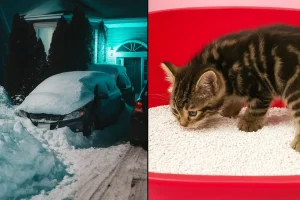
Cat litter mainly works by improving traction, reducing slips, and making walkways safer during winter storms. This makes it a practical choice for snow safety, even though cat litter melt ice solutions focus more on grip than actual melting.
Moreover, does cat litter work to melt snow and ice? It won’t instantly thaw snow, but its granular texture provides a grip on slippery surfaces. Although it offers no direct melting action, cat litter is nonetheless vital in mitigating the risk of slipping during severe winter conditions, as it adds traction like traction magic on ice or snow. Sand can function as a useful ally to cat litter, providing additional traction.
Best Practices for Applying Kitty Litter on Ice
When laying kitty litter to boost traction on slick surfaces, be sure to use the proper amount that helps gain traction. Ice traction is improved most effectively by sprinkling a light, uniform layer of kitty litter across the frozen surface. Applying too much is simply wasteful, whereas applying too little may prove ineffective, especially when using kitty litter to melt ice for traction on slippery surfaces.
For traction, just enough must be added to impart a grippy texture onto the ice, about a cup per small section, ensuring it doesn’t melt ice. Major areas often necessitate a greater quantity of kitty litter to effectively add traction on ice or snow, especially when considering how winter affects our planet and the need for solutions that are safer for the environment.
Some might ask, does cat litter provide any benefits on ice? Yes, it certainly can, but it relies on being laid correctly in order to be effective in providing traction magic helps. Apply the litter only after you have brushed away as much ice and snow as possible to ensure the best results when using kitty litter on icy surfaces. In turn, you maximize the sand’s effectiveness for ice safety, allowing you to walk on ice with confidence, thanks to natural materials.
The amount of cat litter required for traction varies according to the area’s scale and the ice layer’s thickness, as kitty litter can become more effective with proper application. Applying the proper dose will keep slips to a minimum while still preserving the effectiveness of the overall road treatment, especially when using kitty litter for traction.
How Much Kitty Litter to Use for Traction?
When dispersing kitty litter as an ice-melt agent, it’s essential to apply enough to furnish the right level of traction on slippery surfaces, as kitty litter is often effective in helping lower the freezing point of water. First, spread a thin layer of kitty litter over the area to enhance traction and reduce slipping. Over spots that receive deeper snow or thicker ice, add a little more. Kitty litter will improve traction and thereby keep walking on sidewalks safer. Be aware that pouring on an excess can make cleanup more difficult, so strike a balance for winter safety while ensuring that the litter won’t harm pets.
If you’d prefer a natural alternative, try using sand together with the kitty litter to boost grip. Together, the two materials provide ample traction while also assisting in relatively eco-friendly ice melt.
Safety Considerations for Pets and People
When employing cat litter to deice, it is crucial to safeguard the well-being of both pets and the home, as kitty litter doesn’t melt ice but helps gain traction on ice or snow. Several varieties of cat litter may harbor harmful chemicals that can endanger pets and children if they ingest them, which change how winter affects our planet. Verify the components of the product and choose a pet-friendly formulation that substantially reduces potential hazards, especially those that won’t melt ice. In addition, be sure the litter leaves no stains on adjacent surfaces and avoids any harm to your driveway or walkway.
From an ice-safety standpoint, applying an excessive amount of litter can leave a mess that may be hard to remove. Apply it only modestly and continually check the results to ensure that the litter won’t melt ice. Make certain your pets stay out of that area until it has fully thawed and is fully safe for them to walk upon. This, in turn, safeguards both you and your pets, emphasizing the importance of using pet and child safe ice melt options.
Alternatives to Cat Litter for Melting Ice
When searching for cat litter substitutes to melt ice, several possibilities that are guaranteed environmentally safe are available to consider. Although road salt is widely used for its fast-acting ability to melt ice, it can be hard on your driveway and nearby plants, whereas kitty litter won’t harm pets.
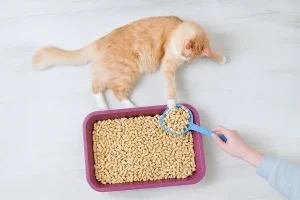
An alternative is sand, which does not dissolve ice but instead delivers traction to prevent slipping, similar to how kitty litter helps in icy conditions that absorb water. Calcium chloride is an additional highly effective ice-melt product that continues to perform even when temperatures are low, making it a better option than kitty litter in some cases.
If you’re seeking a pet-friendly option, Safpaw is an excellent choice, as it’s harmless to animals and the planet yet still provides effective melting power, unlike products that won’t harm pets. Should you explore other ice melt options, make certain to select one that meets your needs and weighs in on factors of safety and effectiveness, such as pet and child safe ice melt, to protect your loved ones.
Other Common Ice Melt Products
An assortment of standard ice-melting products can be found to break down snow and ice in frigid weather. Calcium chloride, for instance, is a commonly chosen product because it is effective over a wide range of temperatures. Another commonly selected option is road salt, especially for use on highways and streets, but it may not be as safe as pet safe ice melt. Blue Heat, like many other ice melt products, is well-renowned for its performance in cold weather, keeping surfaces safe and free of ice.
Many individuals likewise opt for Safe Paw, a product formulated to be safe for pets and the environment. Both residential and commercial properties frequently rely on these ice-treatment products, which deliver effective results on frozen driveways and walkways.
Environmental Impact of Ice Melt Solutions
The environmental consequence of ice-melt products can be substantial, since several such treatments affect the surrounding environment, making natural materials a preferable choice. Some ice-treating products harbor chemicals that can injure plants, soil, and water sources when these chemicals leach away, unlike rock salt which won’t harm pets. Although these products work well at melting ice, they can likewise produce pollution and harm wildlife habitats, unlike kitty litter which won’t harm pets. When selecting an ice-melt product, it’s necessary to look for safer alternatives, particularly in sensitive areas, like those that use natural materials.
A number of environmental concerns with ice melt products stem from the enduring effects of sodium chloride use or other harmful chemicals, particularly when comparing ice melt vs. better options than kitty litter. When these chemicals infiltrate the ground and surrounding water systems, they endanger snow safety and the health of the local ecosystem, which is why safe ice melt options, including child safe ice melt, are preferred. In response, numerous individuals are investigating loss-prevention strategies that are less harmful to the environment, advocating for green methods of both ice-rink construction and snow-management practices..
Homemade Ice Melt Solutions
Once winter brings snow and ice, do-it-yourself ice-melt formulas offer a simple and effective way to clear slippery surfaces. Household items like salt, baking soda, and even cat litter melt ice solutions can be combined into safer, eco-friendly recipes. These blends are not only budget-friendly but also give you more control over what you spread on your driveway or walkways. Many homeowners rely on mixtures where cat litter melt ice options provide extra traction while reducing the need for harsh chemicals.
A growing number of homeowners opt for homemade ice-melt formulas, as they’re easier on the planet and on their pets. With ingredients already in your kitchen, you can whip up a fast ice melt that keeps your walkways safe while inflicting no harm, using natural materials. Many also use cat litter melt ice solutions as a safe and inexpensive option that adds traction on slippery paths. Keeping the snow safe isn’t obligated to be intricate or costly once you have these simple, homemade solutions at hand, especially those like cat litter melt ice that won’t harm pets.
FAQs
Is kitty litter good for an icy driveway?
Yes, kitty litter can provide traction and help prevent slipping on an icy driveway, but it doesn't melt the ice, making it a good option for kitty litter for traction.
Can kitty litter be used for snow?
Yes, kitty litter can be used to provide traction and help melt snow.
